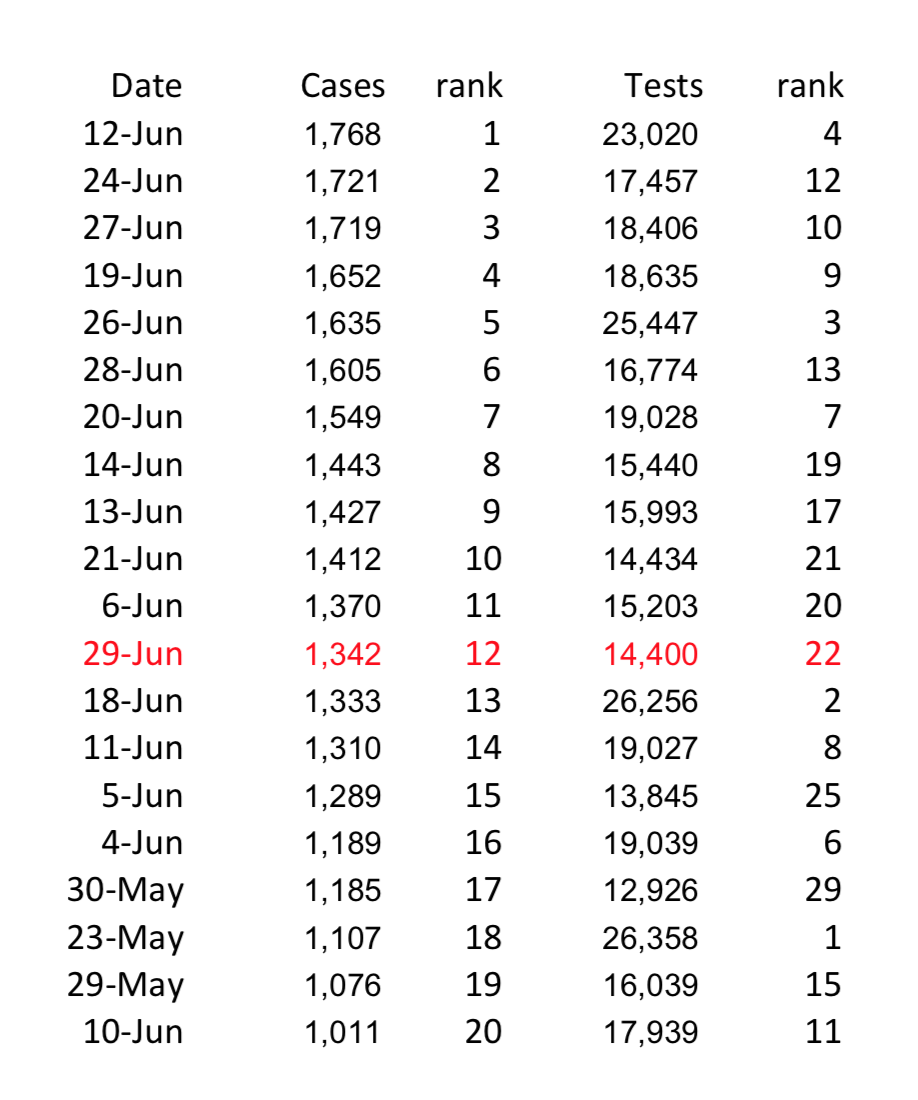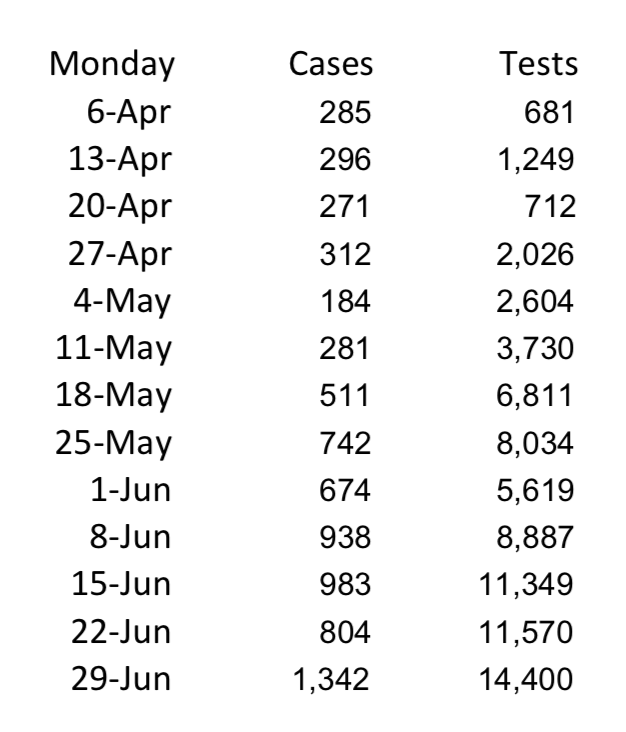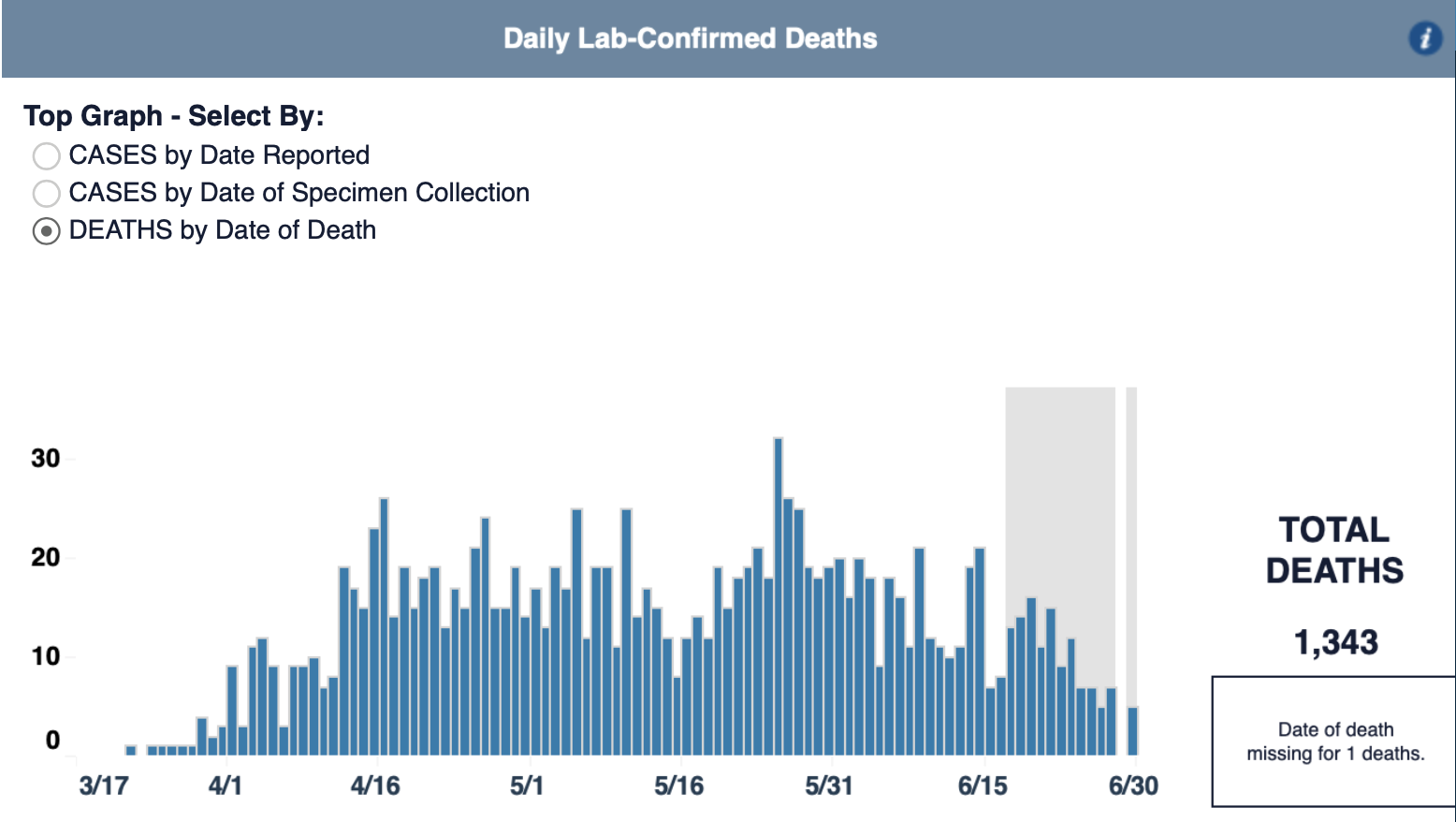This is an interesting week for COVID-19 data for North Carolina. Gov. Roy Cooper has just extended his shutdowns of certain businesses and half-shutdowns of many other businesses for at least three more weeks, plus he added forcing people to wear face masks (any kind of face masks, including dish towels). Right now, however, it’s too soon for data improvements to be credited to Cooper’s autocratic extensions.
Besides that, improvements this week would make it harder for media to help justify it when Cooper inevitably vetoes the bill that would allow Independence Day celebrations. It seems to hamper his school announcement as well.
If you’re interested, you can read about what flattening the curve originally meant, ask why it didn’t mean reopening when Cooper started boasting about flattening the curve in late April, recall that it meant rising hospitalizations in June, look at how those hospitalizations actually compare with what was projected back in March, and wonder how that could be used to justify the governor leveling more restrictions. Also, you can revisit a particular effort by the administration working with media to scare people back on Memorial Day weekend.
Hospitalizations, down; new cases, down; deaths are … where?
In this context, June 29-30 has provided an interesting glimpse in how the administration and media deal with COVID-19 information. Consider it from the perspective of someone trying to find out the actual situation in North Carolina.
On June 29, the daily data release from the NC Department of Health and Human Services (DHHS) included the following:
- Hospitalizations: Down to 843
- New cases: 1,342 out of 14,400 tests
- Tests positive: 9.3%
Viewed in light of the media drive to sensationalize the scariest figure in the bunch, those data didn’t offer any particular newsworthy item to seize upon. Sometimes when that happens they’ll report total cases (63,484), which is always higher since recoveries don’t count.
That day, however, a particular datum was missing. It was missing all day long.
- Deaths: …
The DHHS deaths chart included the following note: “Date of death missing for 1 deaths” [sic]. Which sounded for all the world that on June 28, there were no reported COVID-19 deaths.
To anyone other than news media, this would be news. It would have been the first time since March 29 — the first time in three months — that happened.
Given this selection of data, what did media report? Some examples:
The News & Observer highlighted new cases plus testing percentages: “More than 1,340 new reported coronavirus cases in NC, as percent positive remains high.”
ABC11 News tried the dog-not-barking approach to tamp down falling hospitalizations with less reporting by hospitals: “North Carolina hospitalizations down but fewer hospitals reporting their numbers.”
WRAL, meanwhile, went full Moneyball, batting percentage against a left-handed pitcher on a Monday night, with its highest new cases ever reported on a Monday:

A case of the Mondays
That prompted me to wonder how that Monday’s number stood against all other days’. Also, knowing that the amount of new cases is tightly linked to the amount of new testing, since the percent positive has been remarkably steady since late April/early May, I wondered how Monday’s completed tests stood against all the other days’. Using previously reported data, I produced a chart ranking the top 20 single-day increases in new cases, but also included those days’ completed tests and ranks (out of 110 days):

So Monday, June 28, was 12th in new cases and 22nd in completed tests. A high number of new cases accompanying a high number of new tests is not news.
How about just for Mondays? I checked all of them through April. Well, I suppose it could be coincidental, but it appears the highest new cases ever reported on a Monday happened to occur on the same Monday as the highest number of new tests results ever reported on a Monday:

Changing data retroactively?
Today brought more fun with data: many of those numbers I had just used, which were derived from previous DHHS releases, were changed in today’s DHHS data release. I haven’t gone through it all yet completely to see everything that was changed. I took a break to record for posterity what it’s like to deal with such a bureaucracy.
I figure that at some point later it’ll be necessary to show everyone what a complete clusterbourach this all has been. And yes, that word means exactly what you think it means.
In the June 30 release (today):
- Hospitalizations: 908 (it’s back over 900, so that will be the headline number for today)
- New cases: 1,186 out of 23,728 tests (lower than yesterday, despite so many new tests)
- Tests positive: 5%
- Deaths: 5 for June 29
Still, as of this writing, DHHS is showing zero deaths for June 28:
DHHS could, of course, go back later and change that to a non-zero (those final two weeks in the gray are given the note “Specimens collected during this period may not yet be reported”). So let’s just keep that to ourselves, OK?
UPDATE, July 1
As expected, DHHS has found two deaths (so far!) for June 28. That terrible “bad” non-news has been erased, and some very useful “good” news has also been manufactured in the July 1 update: A new record high in cases! Yes, 1,843 new cases have been found, although it required shattering the old record of daily tests to get it: 32,205 new tests. The percent positive is only 5.7 percent.



